The Engraver's Art
Durer
became the first exponent of the Renaissance north of the Alps, but it was his
exceptionally fine prints rather than his paintings which established his
reputation as a great artist.
'Only a
dried-up mind has no confidence in itself to find its way to something further,
and so drags on in the same old path content to imitate others and without the
gumption to think ahead for itself.' So wrote Albrecht Di1rer, and his own work
stands as the best illustration of the unquenchable curiosity and probing
spirit he admired. This spirit took him from the Nuremberg goldsmith's workshop
of his father, steeped in medieval tradition, to the pinnacle of achievement as
the first German master of the Renaissance.
THE ITALIAN INFLUENCE
Durer's
art was rooted deeply in the Northern tradition, and shaped by his visits to
Italy and his contact with the Renaissance. In his first great work, the
illustrations to The Apocalypse, published in 1498 shortly after his return
from Italy, Darer showed both what made him a new kind of artist north of the
Alps and what still linked him to the old ways. These terrifying visions of the
end of the world were topical for the people of Di1rer's time. Many of them
believed the year 1500 would usher in the Last Judgement, and the war, disease
and turmoil of the era found expression in Durer's violent, vibrant images.
The
woodcut technique Darer used had been popular in Germany for some time, but in
Durer`s hands it reached new heights of expressiveness. He drew his designs
directly on soft wood and they were then chiseled out by highly trained
craftsmen. The remaining, raised parts of the block would be inked and then
printed on paper.
In
these prints Darer made use of the Italian techniques of drawing the figure
especially the short 'modeling' lines which give it its roundness and his
angels, devils and humans have a three-dimensional thrust hitherto unseen in
the woodcut? He also borrowed Italian discoveries in perspective the ability to
present a given space in consistent depth to set his visionary drama in a world
understandable to ordinary human beings.
However,
in many respects The Apocalypse woodcuts are still rooted in Darer's native
traditions and could never be mistaken for Italian work. The tormented faces,
the jostling crowds, the hideous demons are all portrayed with a distinctive
angular, elaborate line that is entirely Darer's own. He had learned from the Italians
but used that learning to express a passionate and personal religious feeling.
This
mixture of styles can also be seen in Darer's many paintings, woodcuts and
engravings of other episodes from the New Testament he rarely chose subjects
from the Old. In The Adoration of the Magi the vibrant colours, the geometric
structure of the composition and the use of classical architecture are all
evidence of the influence of Bellini and Leonardo. At the same time the figures
and the landscape in the background are distinctly Northern in character.
PERFECT PROPORTIONS
Increasingly,
for Darer, the human being was the central concern of art, and the human figure
the basis of that concern. He studied the nude ceaselessly. During his first
visit to Venice he copied the classical nudes of the Italian artists and
engravers Antonio Pollaiuolo and Mantegna, and in his drawings, paintings and
his fine engraving The Fall of Man, he sought a formula for representing the
body, a guideline for the perfect proportion of head, legs, torso and arms.
Though he came to realize that there were many such formulas, and no one
reliable measure of beauty, these efforts enlarged the scope of his work and
helped him to achieve on the small scale of the woodcut or engraving the kind of
grandeur Italian artists achieved in frescoes or paintings.
A
striking feature of Durer's paintings and engravings is his mastery of minute
detail. He drew endless studies of hands, heads, household objects, plants and
animals, and incorporated the results of his observations with painstaking care
in his major works. The tiniest detail should be done skilfully and as well as
possible he said nor should the slightest wrinkles and puckers be omitted. His
fine sympathetic portraits of Humanists and burghers alike bear witness to this
belief, as do his magnificently detailed drawings of animals such as the famous
Hare. Like Leonardo, he was fascinated by the natural world, but whereas his
Italian contemporary was obsessed by particular subjects, Darer drew and
painted anything which caught his eye. He believed that 'truly art is contained
within nature and he who can seize it has got it'. His shimmering watercolour
sketches of mountain scenery unique in their day show his truth to nature at
its most acute.
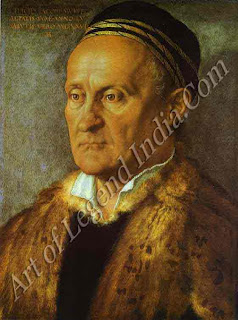
Some of
Durer's greatest works are his copperplate engravings. This technique, which
derived from a combination of woodcut printing and ornamental engraving on
silver and gold was peculiarly suited to him, given his training as a
goldsmith. Darer himself cut the design on to a copper plate using a metal
burin, like a delicate chisel, which required tremendous patience, keeness of
eye, and steadiness of hand. The printers would then rub ink into the cut-out
grooves and press the plate on to damp paper.
THE TRIUMPH OF LINE
Durer's
engravings display an amazing variety of tones and textures and subtle
gradations of light and shade. They are not only the most technically
accomplished engravings ever produced, they also express a range of feeling
never before seen on such a small scale. His skill and originality reach
unparalleled heights in three large and personal engravings The Knight, Death
and the Devi, Melencolia I and St Jerome in his Study.
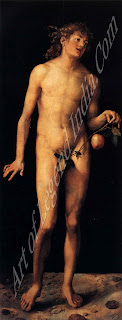 Durer's
unflagging appetite for experiment led him to develop a facility in many media.
He was one of the first artists to try the new process of copperplate etching,
which involved drawing the design on a wax ground melted over the surface of
the plate and immersing it in acid to etch out the lines. He explored the
complex realms of art theory in pursuit of knowledge, publishing his findings
in treatises on measurement and human pro-portions, and made detailed notes of
nature's humblest phenomena. Yet this many-sided activity was always an
expression of his own individuality, that of a religious man, deeply moved by
the teachings of Martin Luther, who was nevertheless also a man of science,
fascinated by the natural world.
Durer's
unflagging appetite for experiment led him to develop a facility in many media.
He was one of the first artists to try the new process of copperplate etching,
which involved drawing the design on a wax ground melted over the surface of
the plate and immersing it in acid to etch out the lines. He explored the
complex realms of art theory in pursuit of knowledge, publishing his findings
in treatises on measurement and human pro-portions, and made detailed notes of
nature's humblest phenomena. Yet this many-sided activity was always an
expression of his own individuality, that of a religious man, deeply moved by
the teachings of Martin Luther, who was nevertheless also a man of science,
fascinated by the natural world.
Durer's
art spanned two eras, the medieval and the Renaissance, and two worlds of
feeling, the classical Italian and the spiritual Northern. In his own day this
brought him unprecedented recognition and praise. He himself wrote, in his
fiercely proud spirit of self-examination: 'God often gives the ability to
learn and the insight to make something good to one man the like of whom nobody
is found in his own days, and nobody comes after him very soon'.
Writer
– Marshall Cavendish
 Durer's
unflagging appetite for experiment led him to develop a facility in many media.
He was one of the first artists to try the new process of copperplate etching,
which involved drawing the design on a wax ground melted over the surface of
the plate and immersing it in acid to etch out the lines. He explored the
complex realms of art theory in pursuit of knowledge, publishing his findings
in treatises on measurement and human pro-portions, and made detailed notes of
nature's humblest phenomena. Yet this many-sided activity was always an
expression of his own individuality, that of a religious man, deeply moved by
the teachings of Martin Luther, who was nevertheless also a man of science,
fascinated by the natural world.
Durer's
unflagging appetite for experiment led him to develop a facility in many media.
He was one of the first artists to try the new process of copperplate etching,
which involved drawing the design on a wax ground melted over the surface of
the plate and immersing it in acid to etch out the lines. He explored the
complex realms of art theory in pursuit of knowledge, publishing his findings
in treatises on measurement and human pro-portions, and made detailed notes of
nature's humblest phenomena. Yet this many-sided activity was always an
expression of his own individuality, that of a religious man, deeply moved by
the teachings of Martin Luther, who was nevertheless also a man of science,
fascinated by the natural world. 
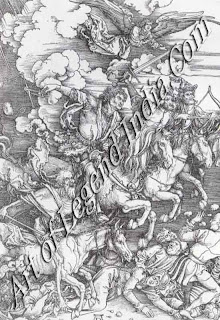
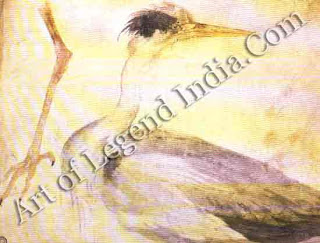
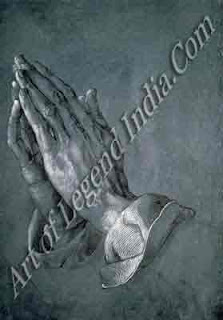
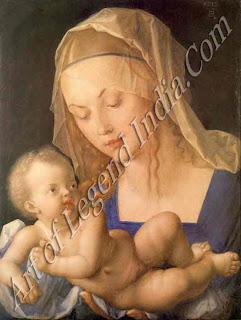











0 Response to "German Great Artist Albrecht Durer - The Engraver's Art "
Post a Comment